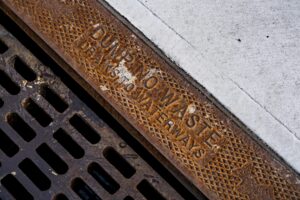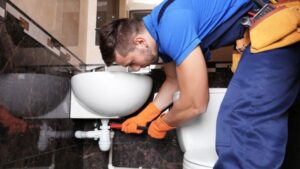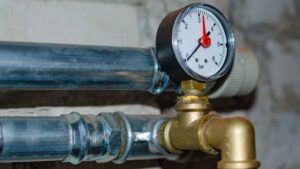Causes of Roof Leaks
Roof leaks can be caused by several factors, which can range from weather-related damages to structural issues. Here are some common reasons behind roof leaks that homeowners should be aware of:
1. Damaged or Missing Shingles
Over time, roof shingles can become damaged due to harsh weather conditions, such as heavy rain, strong winds, or hailstorms. Damaged shingles may curl, crack, or even go missing, creating gaps in the roof structure where water can seep through, leading to leaks.
2. Roofing Material Wearing Out or Cracking
All roofing materials have a certain lifespan and are subject to wear and tear. Aging materials can deteriorate, losing their waterproofing capabilities. Flat roofs made from tar and gravel, for example, can crack or blister, allowing water to penetrate the surface and cause leaks.
3. Ice Dams
In colder climates, ice dams can form on the edges of a roof, preventing melted snow from draining. As a result, water can accumulate and seep underneath the shingles or roofing materials, resulting in leaks and potentially severe structural damage.
4. Improperly Attached Roof Vents
Roof vents, such as attic vents, exhaust fans, and plumbing vents, are crucial for maintaining proper airflow in a home. However, if these vents are improperly installed or sealed, they can create weak points in the roof, allowing water to infiltrate the structure.
5. Improperly Sealed Rooftop Features
Rooftop features, such as chimneys, skylights, or solar panels, require proper sealing and flashing to prevent water from entering the roof. Any gaps or improper sealing between these features and the roof can lead to leaks and water damage.
Signs of a Roof Leak
Detecting a roof leak early is crucial in preventing extensive damage. Keep a lookout for these key signs that may indicate a possible roof leak:
1. Water Stains on Walls or Ceiling
One of the most noticeable signs of a roof leak is water stains on walls or ceilings. These stains often start as small, discolored spots and can eventually grow into larger patches if not addressed promptly.
2. Damp Spots or Mold Growth
Damp spots on walls, ceilings, or in the attic may indicate that water is seeping into your home. In addition to causing damage to your home’s structure, persistent dampness can lead to mold growth, posing health risks to your family.
3. Roof Sagging or Damaged Roofing Materials
Visible sagging or damage to the roof’s structure may signal that water is accumulating and causing structural issues. Inspect your roof regularly for signs of wear or damage, such as curled, cracked, or missing shingles, as these can be indicators of impending leaks.
In conclusion, understanding the causes and signs of roof leaks is crucial in addressing these issues promptly. Regular roof maintenance and inspections, coupled with professional repairs from a licensed roofer, can help keep your home safe, dry, and free from leaks.
The Importance of Gutter Guards and Regular Roof Inspections
Gutter Guards: Gutter guards play an essential role in protecting gutters and valleys from debris like leaves and sticks. They are especially important for properties with large trees, such as gum trees, that shed leaves throughout the year. Gutter guards prevent blockages in downpipes and gutters, reducing the risk of roof leaks.
Regular Roof Checks: Even if you have gutter guards installed, it’s crucial to inspect your roof periodically. Debris can accumulate on top of the gutter guards, and finer silt can seep through, potentially causing backups and water spillage into the roof space. Regular checks help identify these issues early on and prevent more significant problems down the line.
Addressing Roof Leaks: DIY vs. Professional Repairs
Spotting and Fixing Cracks: Cracked tiles are a common issue that can lead to roof leaks. While some preventative maintenance, like clearing gutters and trimming overhanging branches, can be done by homeowners, fixing roof leaks is best left to professionals.
DIY vs. Professional Repairs: While DIY solutions like applying silicone might seem feasible, they are often temporary fixes that don’t address the root cause of the problem. Ricky strongly advises against DIY roof leak repairs due to the complexities and potential dangers involved. Professional roofers have the right skills, tools, and safety equipment to effectively resolve these issues.
Trust the Experts for A Safe and Dry Home
Maintaining your roof is essential, particularly with erratic weather conditions. While certain preventative measures can be taken by homeowners, professional intervention is crucial when it comes to repairing roof leaks. Trust the expertise of licensed roofers like ProRec Plumbing to ensure your home remains safe and dry.
If you are experiencing roof leaks or need a professional inspection, contact ProRec Plumbing for reliable and expert roofing services. Keep your home protected year-round with our team of licensed professionals.





